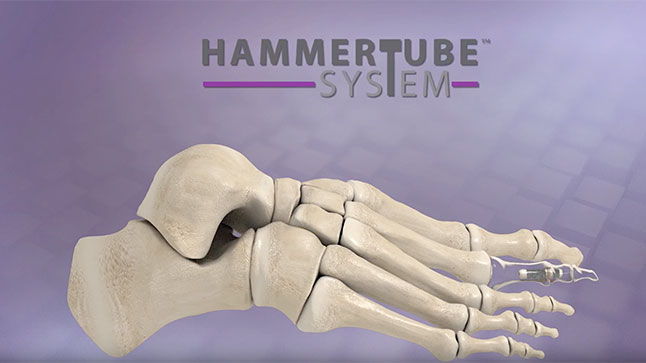- Specific shoe types – high-heeled shoes or other footwear that causes constriction in the toe area can crowd the toes and may lead to hammertoe.
- Traumatic injury – a broken, jammed, or stubbed to can increase the risk of developing a hammertoe.
- Toe muscle imbalance – An abnormal balance of the toe muscles can lead to the toe becoming unstable and contracting.
Hammertoes
When an imbalance occurs in the ligaments, muscles or tendons that usually keep the toes straight, a condition called hammertoe can occur. This condition is considered a deformity of the foot and is characterized by an abnormal bending in the middle joint of the toe. Hammertoes most commonly affect the middle toes of the feet between the big toe and the pinkie toe.
Hammertoe Causes
Other factors that can increase the risk of developing a hammertoe include your age (risk increases as you get older), gender (women are more likely to develop hammertoes), toe length (a second toe that is longer than the big toe increases risk), and diseases including arthritis and diabetes make people more susceptible to deformities of the foot.
Hammertoe Symptoms
The chief characteristic of a hammertoe is an abnormal bend in the middle joint of one or more toes. Trying to move the affected toe(s) normally may result in pain or difficulty. If the condition has persisted for some time, the development of corns and calluses may appear as the result of the affected toes rubbing together inside a shoe.
Hammertoe Treatment
In some cases, conservative treatment might be enough to realign the affected toe. Conservative treatment is most often possible when the toe has retained some flexibility to it. When this is the case, switching to better-fitting shoes that have more room for your toes or wearing orthotic shoe inserts may be beneficial. These efforts may help to reposition the toe, thus relieving the pain and pressure the hammertoe is causing. Your doctor may also recommend toe exercises the help stretch and strengthen the muscles of the affected toe(s).
When conservative efforts fail to provide necessary hammertoe relief, or if the affected toe no longer maintains any flexibility, surgery may be the right next step. In some cases, hammertoe surgery involves the release of the muscle or tendon that is responsible for preventing your toe from behaving normally. In other cases, it may be necessary to remove a piece of the toe bone to restore normal alignment of the toe.
If you or someone you know is dealing with the effects of a hammertoe, contact us today. With a breadth of experience in hammertoe treatment, Dr. Haupt and his expert team are here to help.



